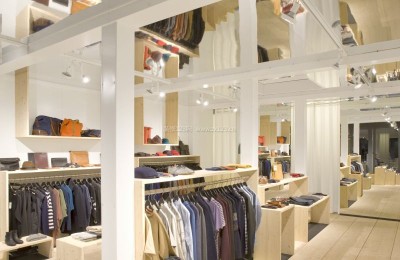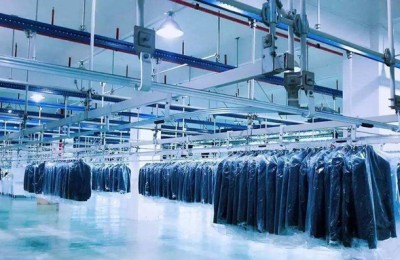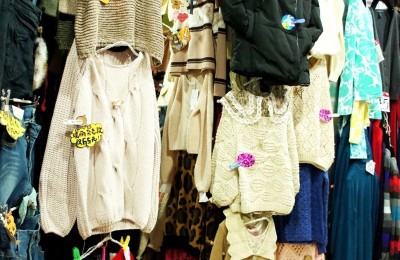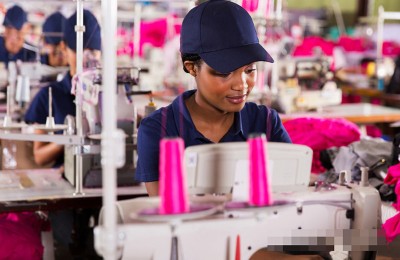Overseas investment accelerates again: Chinese textile companies deploy globally
Factories in Cambodia, Myanmar, and Vietnam, offices in Milan, and branches in New York… At the 122nd Canton Fair, a “Global Layout Map of Luthai Group” was posted in the most conspicuous place of the company’s booth. “We will set up more and more overseas locations.” said the person in charge of the company’s site.
The Canton Fair is regarded as a barometer and weather vane of China’s foreign trade. At this exhibition, well-established Chinese textile companies such as Jifa Group, Huafu Colored Textile Group, and Daiyin Group all held “overseas layout cards.” Actively integrating and allocating transnational resources and building a “China + neighboring countries” production model are becoming an important choice for more and more Chinese textile companies to optimize their structure and adjust their production capacity.
“Since 2014, we have successively set up factories in Southeast Asia. In addition to labor cost issues, there are also considerations such as tariff preferences and proximity to the local market.” said Song Weifeng, head of the International Business Department II of Luthai Textile Co., Ltd.
These overseas production bases are matched with domestic design and R&D centers and have become a natural extension of the industrial chain of many Chinese textile companies. Now Lu Thai Group has invested in the construction of 60,000 spindles of spinning and 30 million meters of yarn-dyed fabric production line projects in Vietnam. The layout of the entire industrial chain from cotton yarn to fabrics to shirts has basically been completed.
By cooperating with governments and enterprises in countries and regions along the “Belt and Road”, Chinese textile companies have continuously implemented and completed investment projects of different scales and levels such as production bases and industrial parks.
In Vietnam, more than half of the total local cotton yarn production is created by Chinese companies such as Lu Thai, Huafu Colored Spinning, and Youngor. In Cambodia, the Sihanoukville Special Economic Zone led by Hongdou Group has attracted more than 100 international companies to settle in, employing 16,000 people.
At the current Canton Fair, the China Chamber of Commerce for Import and Export of Textiles released a relevant report stating that the front-end of China’s textile industry has initially completed its transfer overseas, especially to Southeast Asia. ASEAN has become China’s third largest textile and apparel exporter after the European Union and the United States. market.
In addition to the accelerated expansion of overseas production capacity, the forms of overseas investment by textile companies are becoming more and more diverse. Through brand acquisition, channel expansion, technical cooperation, capital operation and other methods, Chinese companies continue to transform and upgrade to improve their position in the global industrial chain.
Chinese women’s clothing brand LILY has opened approximately 70 stores around the world. “In order to be close to the consumer market and shorten marketing costs, our overseas sales are mainly dealers, entering large supermarkets, department stores and other places.” Lu Xin, specialist of the overseas business department of Shanghai Silk Group Brand Development Co., Ltd., said that the company is currently Planning to open the first overseas direct store in Barcelona.
In addition to self-operated brands, there were many large-scale cross-border acquisitions in China’s textile industry last year: Shandong Ruyi Group acquired SMCP Group, the parent company of French fashion brands Maje and Sandro, for 1.3 billion euros, and Shanghai fashion brand Vignas purchased South Korea. Brand TeenieWeenie, etc.
Industry insiders analyze that as a “shortcut” to quickly open up the international market, acquiring mature foreign brands can reduce the cost of incubating private brands and expand and enrich the company’s product categories.
Guo Wei, deputy director of the Apparel Department of China Chamber of Commerce for Textile Import and Export, believes that professional marketing talents and mature operating models are the key to the long-term development of overseas investment. In addition, we must integrate with the world, introduce brand buying systems, designers participate in the entire industry chain, and establish specialized property rights departments and other operating models to increase international recognition.
While Chinese textile companies are accelerating their overseas expansion, they are also receiving support from domestic business association platforms to connect domestic financial resources with corporate overseas financing needs. In March this year, the China Textile International Production Capacity Cooperation Enterprise Alliance was established to resist disorderly competition and promote the docking and cooperation of high-quality international production capacity projects. In the future, China will also accelerate the establishment of an “going global” information platform to provide guidance for companies to make rational investments when “going global”.
Data show that from 2015 to 2016, China’s textile and apparel industry’s foreign direct investment exceeded US$4 billion, accounting for more than half of the total investment stock since 2003.
The report of the China Chamber of Commerce for Import and Export of Textiles points out that China’s textile and apparel industry maintains a trend of foreign trade structural adjustment and accelerating power conversion. The development results achieved at this stage will provide an important foundation for the future transformation, upgrading and sustainable development of the entire industry. and protection. Overseas investment accelerates again: Chinese textile companies deploy globally
AAA
Disclaimer:
Disclaimer: Some of the texts, pictures, audios, and videos of some articles published on this site are from the Internet and do not represent the views of this site. The copyrights belong to the original authors. If you find that the information reproduced on this website infringes upon your rights and interests, please contact us and we will change or delete it as soon as possible.
AA






